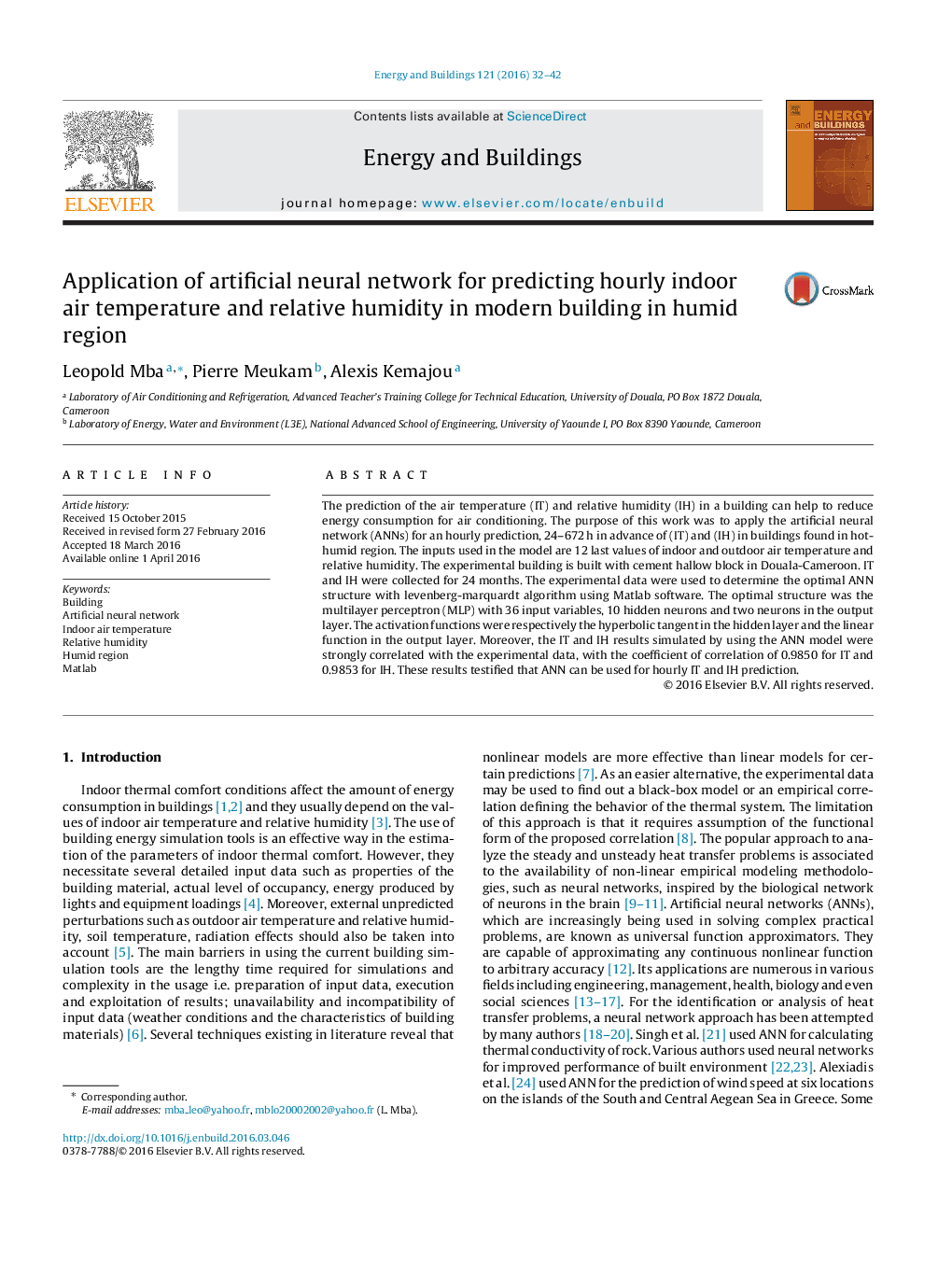| Article ID | Journal | Published Year | Pages | File Type |
|---|---|---|---|---|
| 262171 | Energy and Buildings | 2016 | 11 Pages |
•Artificial Neural Networks (ANNs) are used to predict comfort parameters.•Hourly indoor air temperature and relative humidity in building were predicted one day to one month in advance in hot-humid region.•ANN model performances are characterized by mean square error and the coefficient of correlation.•The experimental building is built with cement hallow block in the town of Douala-Cameroon.
The prediction of the air temperature (IT) and relative humidity (IH) in a building can help to reduce energy consumption for air conditioning. The purpose of this work was to apply the artificial neural network (ANNs) for an hourly prediction, 24–672 h in advance of (IT) and (IH) in buildings found in hot-humid region. The inputs used in the model are 12 last values of indoor and outdoor air temperature and relative humidity. The experimental building is built with cement hallow block in Douala-Cameroon. IT and IH were collected for 24 months. The experimental data were used to determine the optimal ANN structure with levenberg-marquardt algorithm using Matlab software. The optimal structure was the multilayer perceptron (MLP) with 36 input variables, 10 hidden neurons and two neurons in the output layer. The activation functions were respectively the hyperbolic tangent in the hidden layer and the linear function in the output layer. Moreover, the IT and IH results simulated by using the ANN model were strongly correlated with the experimental data, with the coefficient of correlation of 0.9850 for IT and 0.9853 for IH. These results testified that ANN can be used for hourly IT and IH prediction.
Graphical abstractFigure optionsDownload full-size imageDownload as PowerPoint slide
